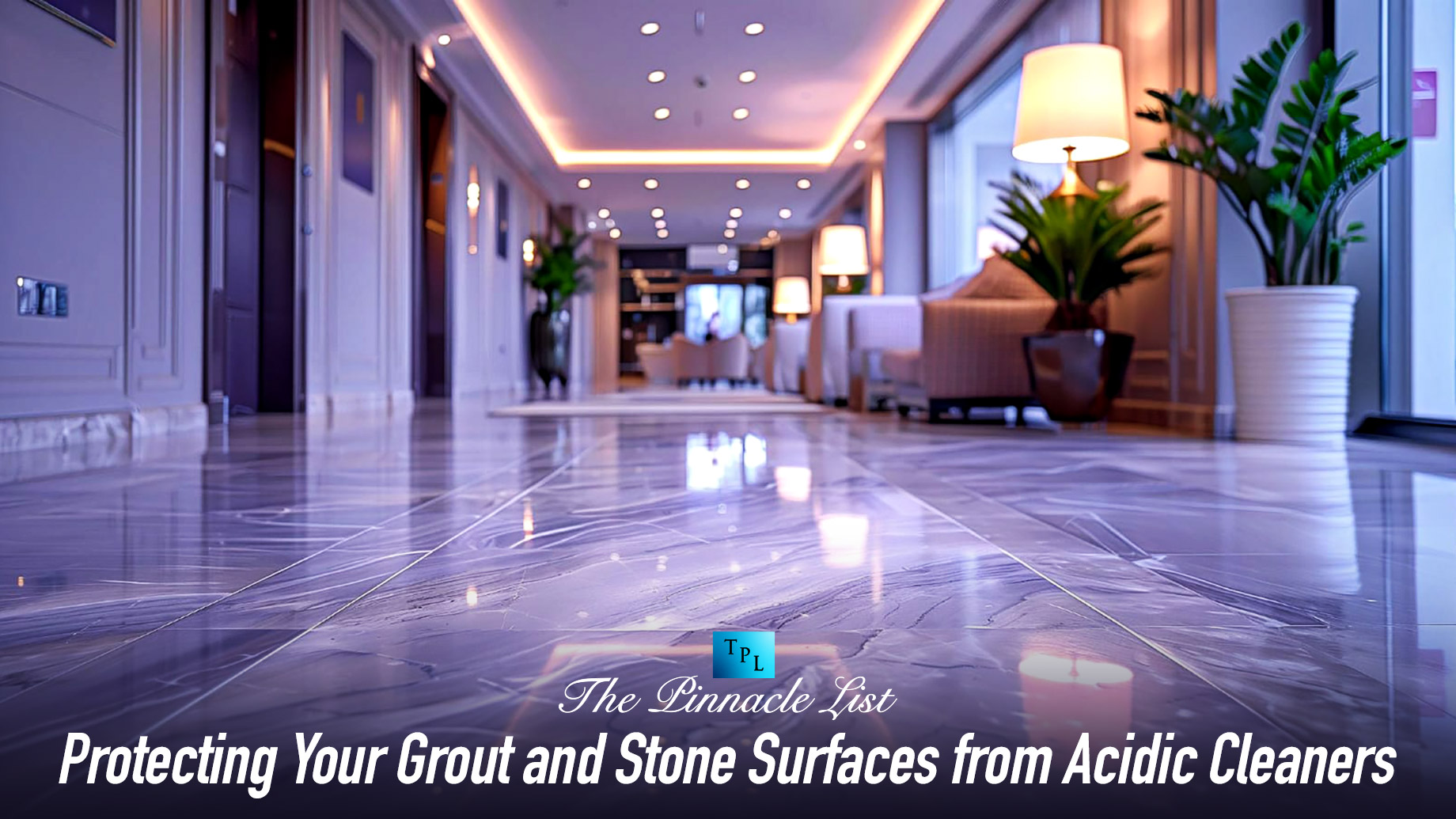
We all love a good DIY cleaning hack; vinegar often tops the list. It’s natural, cheap, and readily available. But when it comes to cleaning your grout and stone surfaces, vinegar might not be your best friend. Let’s explore why it’s important to protect these surfaces and the potential risks associated with using acidic cleaners.
About Grout and Stone Surfaces
Grout is the material that fills the spaces between your tiles. It helps keep tiles in place and prevents debris from getting between them. Grout also adds a finished look to your tiling, making it essential for function and aesthetics.
Natural stones like marble, travertine, and limestone add elegance and durability to your home. They are popular choices for countertops, floors, and bathroom surfaces. However, these stones require proper maintenance to maintain their beauty and functionality.
Importance of Maintenance
Maintaining grout and natural stone surfaces is crucial for their longevity and appearance. These surfaces can quickly become stained, discolored, and damaged without proper care, leading to costly repairs. Therefore, it is advised to seek professional a restoration service if your surface is damaged. You can then maintain it using right after-service care products.
The Impact of Acidic Cleaners
Acidic cleaners, like vinegar, are effective because their low pH can break down grime, mineral deposits, and stains. While this might work wonders on some surfaces, it can spell disaster for others.
Chemical Reactions with Stones
When acids come into contact with calcium carbonate in stones like marble and travertine, they react aggressively. This reaction can cause etching, leaving the surface with dull spots and pitting.
Examples of Damage
Imagine cleaning your beautiful marble countertop with vinegar. At first, everything seems fine. But after a few cleanings, you notice dull patches and tiny pits. This is the result of the acid eating away at the stone. Similarly, grout can become discolored and deteriorate with regular exposure to acidic cleaners.
Sealants: The First Line of Defense
Sealants are protective barriers applied to grout and stone surfaces. They help prevent moisture, stains, and wear, keeping your surfaces looking new and making them easier to clean.
Types of Sealants
There are two main types of sealants: penetrating and topical. Penetrating sealants soak into the material and protect from within, while topical sealants sit on the surface and provide a protective layer.
Compromised by Acid
Acidic cleaners can break down these sealants, reducing their effectiveness. Once the sealant is compromised, the underlying grout and stone are left vulnerable to damage.
Identifying Acidic Cleaners and Their Risks
Other common acidic cleaners besides vinegar include lemon juice and certain commercial bathroom cleaners. While they can be effective for certain tasks, they pose risks to grout and natural stone.
Specific Risks
Using these cleaners on grout and stone can lead to various problems. They can strip away sealants, cause discoloration, and even lead to structural damage over time.
Signs of Damage
Look for dull spots, discoloration, and pitting on your stone surfaces. For grout, watch for areas that become darkened or crumbly. These are clear indicators that acidic cleaners have caused damage.
Safe Alternatives to Acidic Cleaners
pH-neutral and alkaline cleaners are designed to clean effectively without harming sensitive surfaces. They are gentle yet effective, ideal for regularly maintaining grout and natural stone.
Benefits of Non-Acidic Cleaners
These cleaners protect the integrity of your sealants and surfaces, ensuring they stay beautiful and functional for years. They clean without causing the chemical reactions that lead to damage.
Examples of Effective Cleaners
Look for products specifically labeled as safe for stone and grout. Many professional cleaning brands offer pH-neutral and alkaline options formulated to protect and maintain surfaces.
Best Practices for Cleaning and Maintenance
Establish a routine that includes regular cleaning with safe products. This helps to prevent the buildup of dirt and grime, making it easier to maintain your surfaces. Incorporating periodic grout cleaning ensures that the spaces between tiles stay bright, hygienic, and free from mold or discoloration, extending the life of your tiled areas.
How to Clean Without Damaging Sealants
Use gentle, non-acidic cleaners and soft cloths or mops. Avoid abrasive tools that can scratch the surface or wear away the sealant.
Importance of Resealing
Periodically resealing your grout and stone surfaces is essential. This helps maintain the protective barrier and keeps your surfaces looking new. Follow the manufacturer’s guidelines for resealing frequency.
Professional Help and Products
Sometimes, professional cleaning and maintenance are the best options. Professionals have the tools and expertise to restore and maintain your surfaces without causing damage.
Professional Products for Grout and Stone
Professional products are specifically designed for the unique needs of grout and stone. They provide deep cleaning and protection, ensuring your surfaces remain in top condition.
Preventing Damage and Prolonging Life
Regular professional maintenance can prevent minor issues from becoming major problems. It helps to extend the life of your grout and stone surfaces, saving you money in the long run.
DIY Cleaning Tips
If you prefer DIY cleaning, stick to pH-neutral and alkaline solutions. Warm water and a small amount of gentle dish soap make a simple, effective cleaner.
Spot Cleaning
Act quickly to clean spills and stains with a safe cleaner. This prevents them from setting in and causing more significant issues.
Routine Maintenance
Incorporate regular cleaning into your routine to keep your surfaces looking their best. Frequent, gentle cleaning prevents the buildup of dirt and grime.
Conclusion
Protecting your grout and stone surfaces from acidic cleaners is crucial for maintaining their beauty and functionality. Choosing the right cleaning products and following best practices ensures your surfaces stay in excellent condition. Prioritize the longevity and appearance of your home by making informed decisions about your cleaning routine. Your grout and stone will thank you for it.